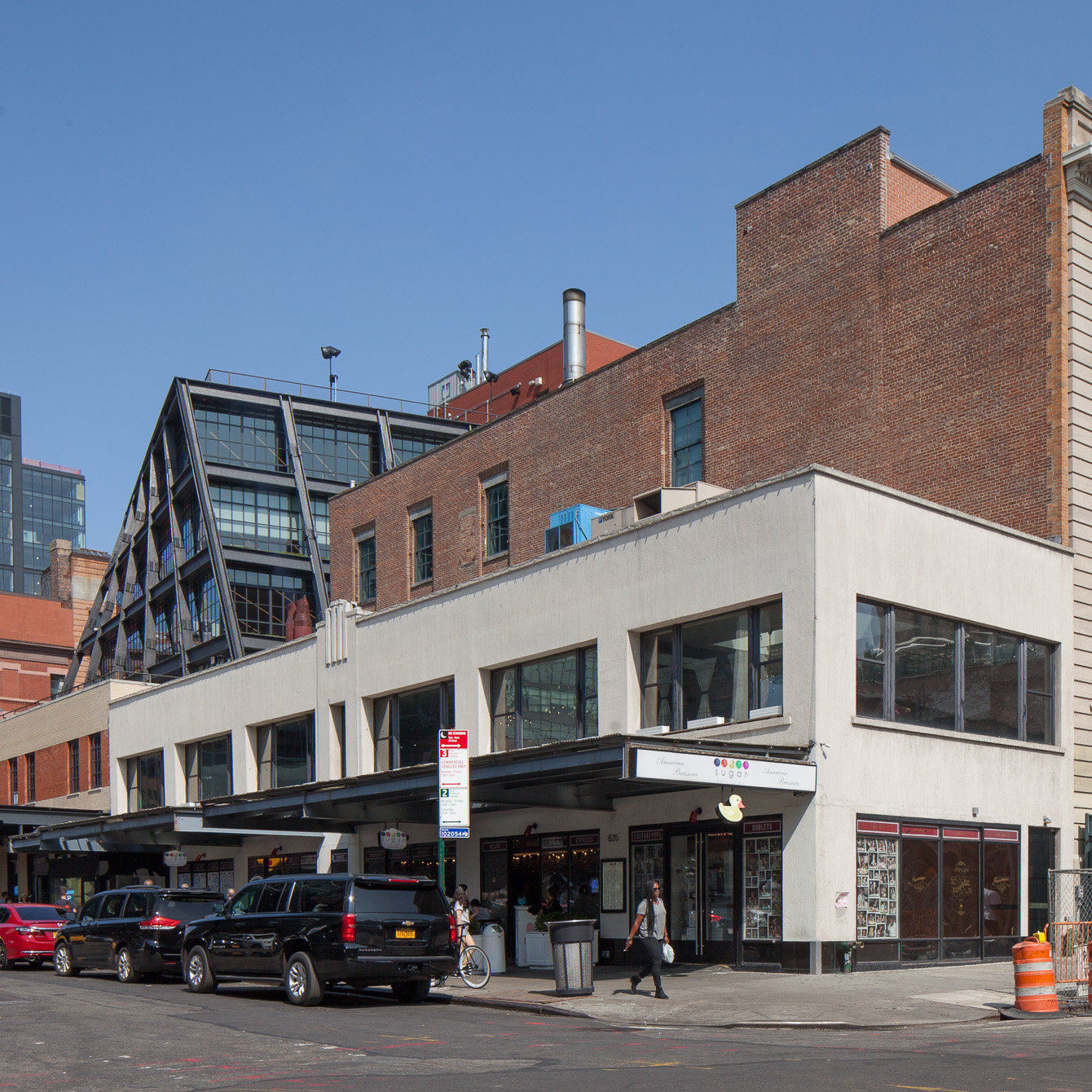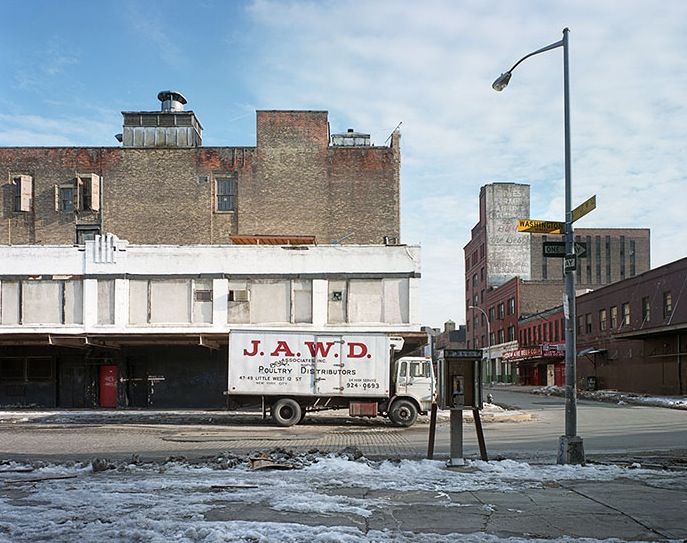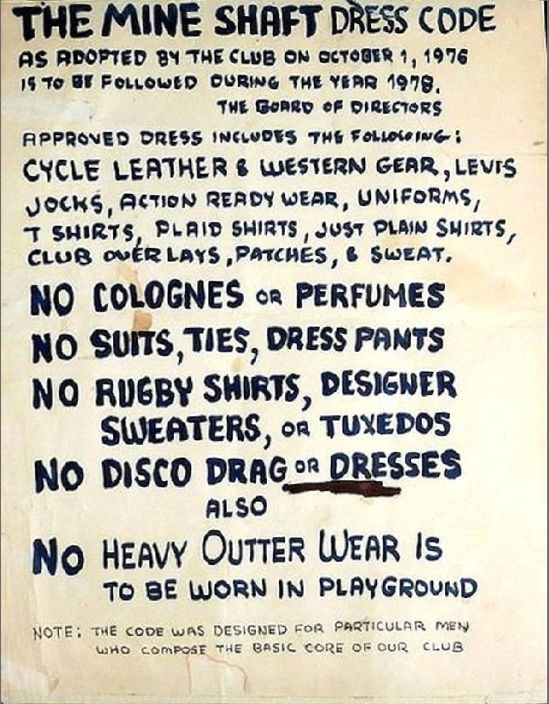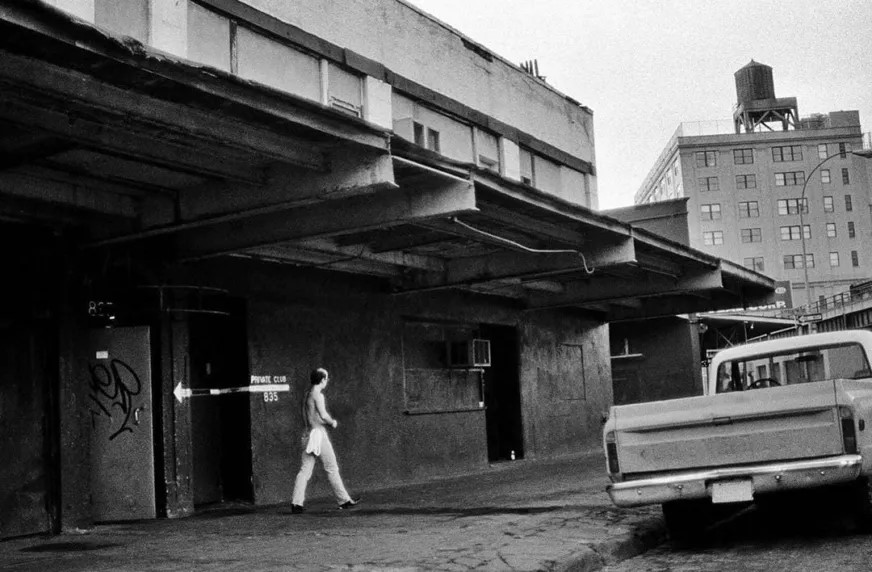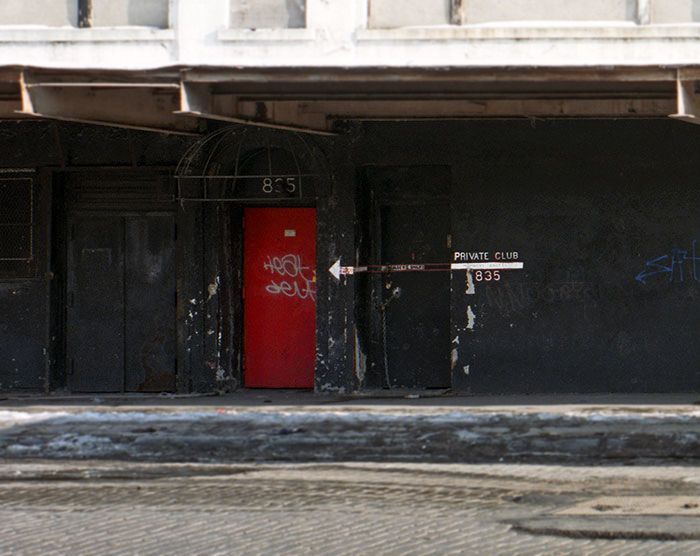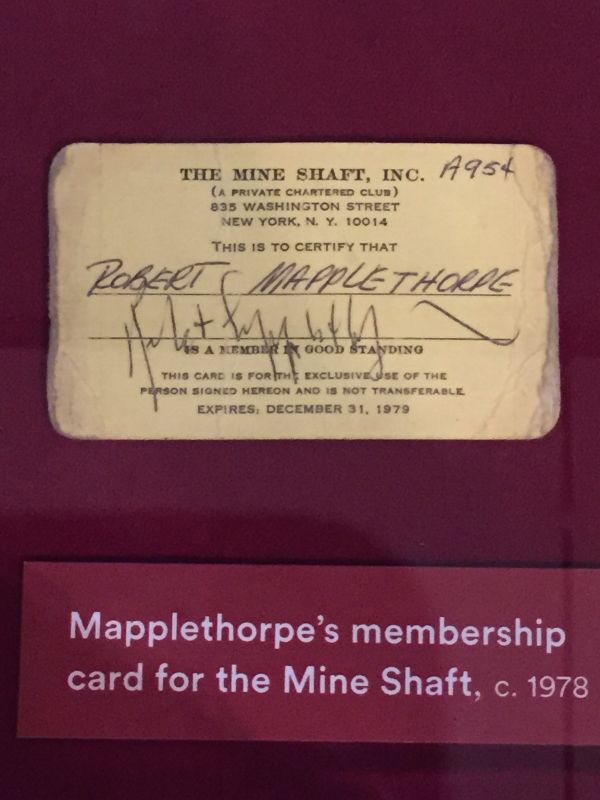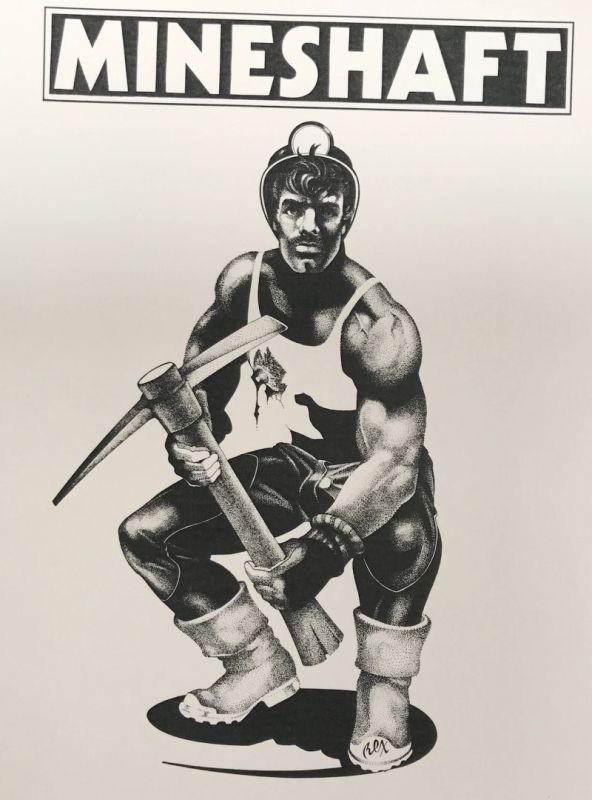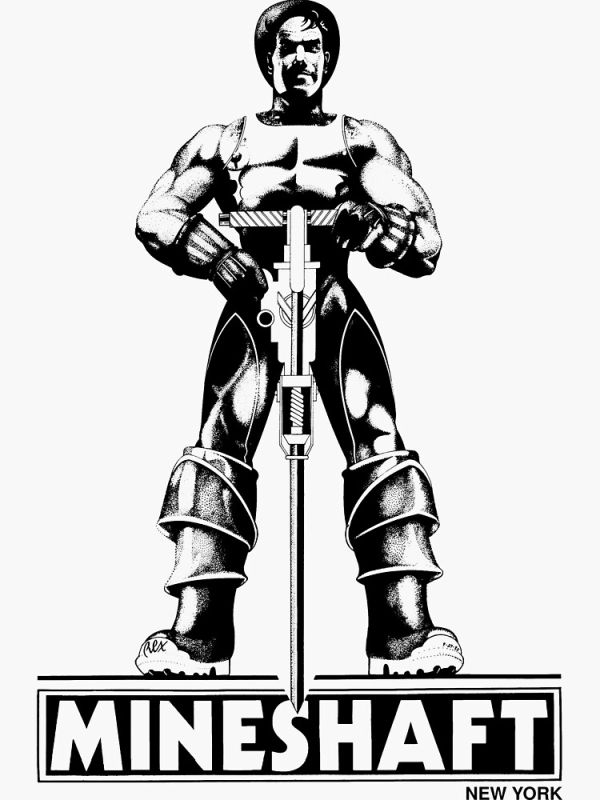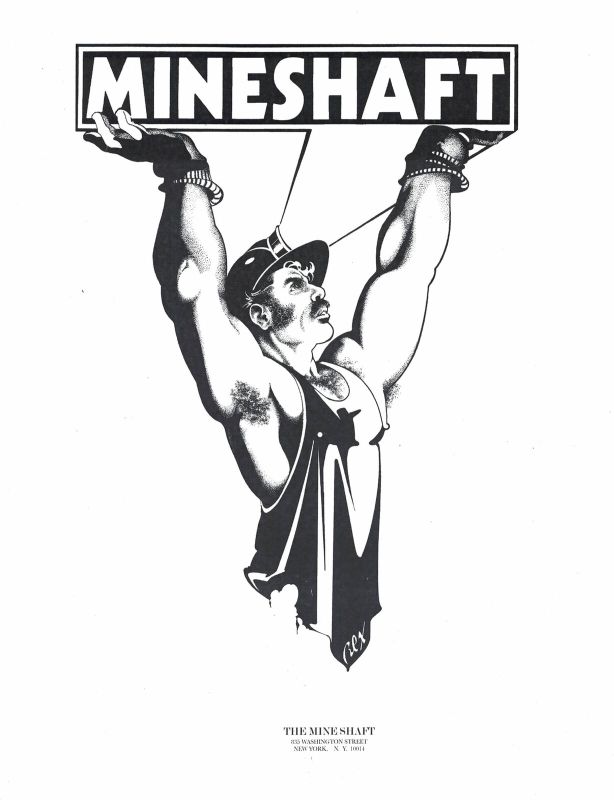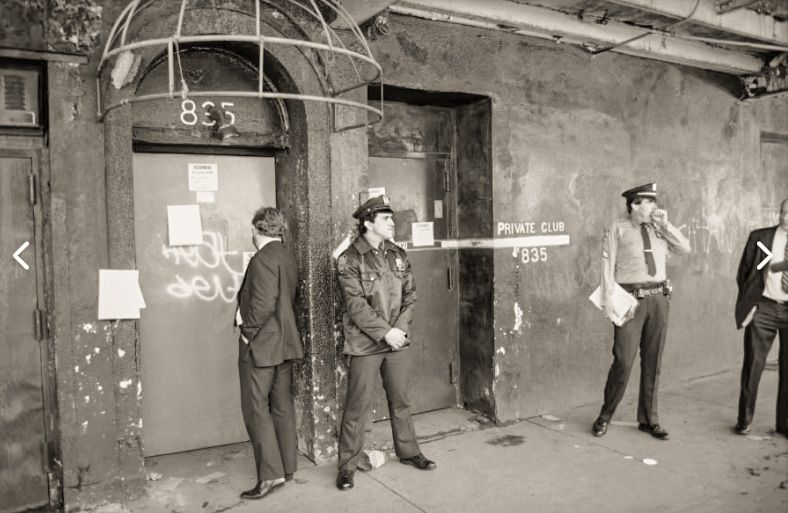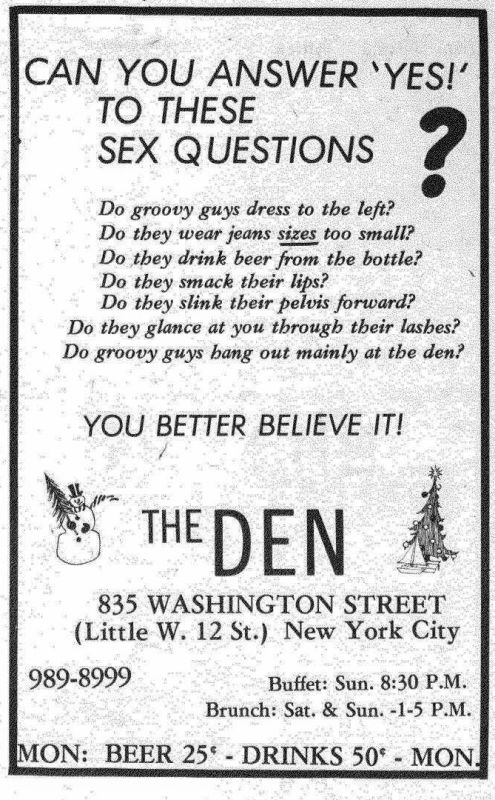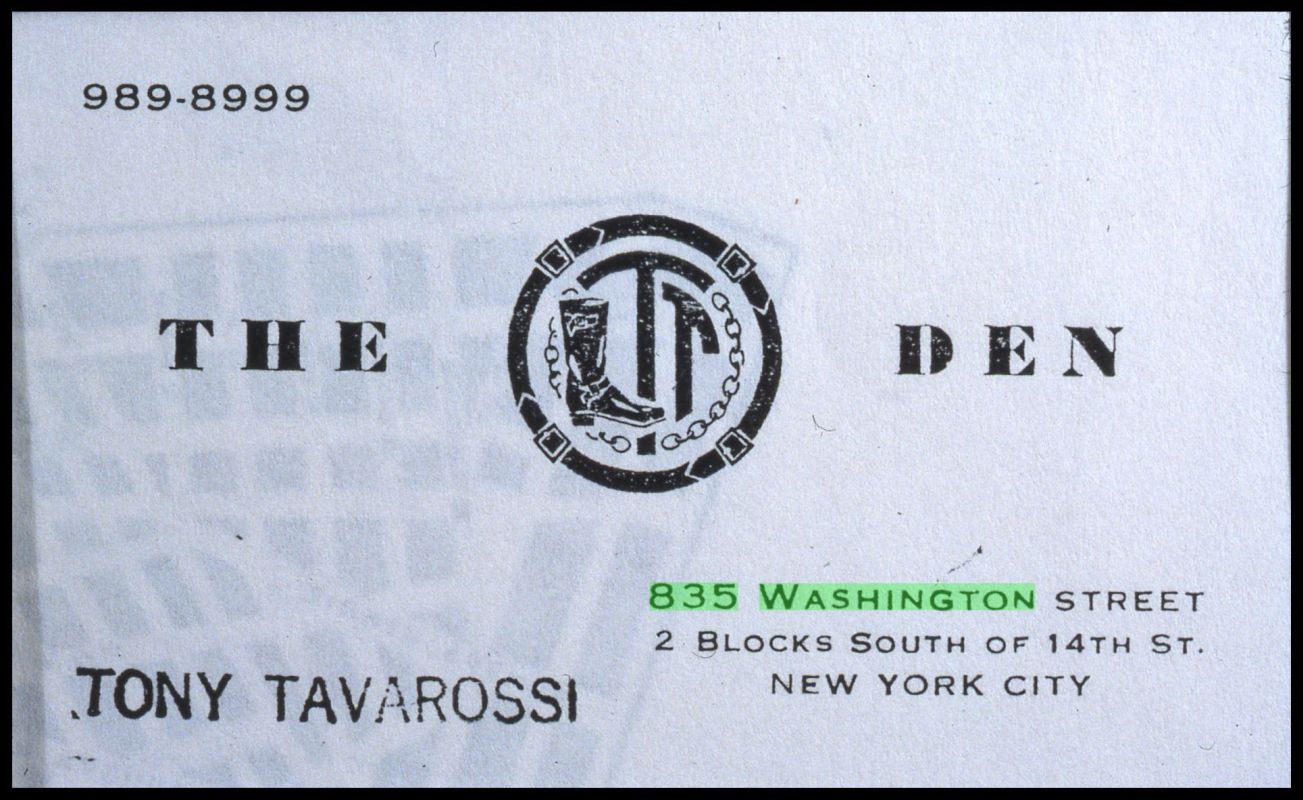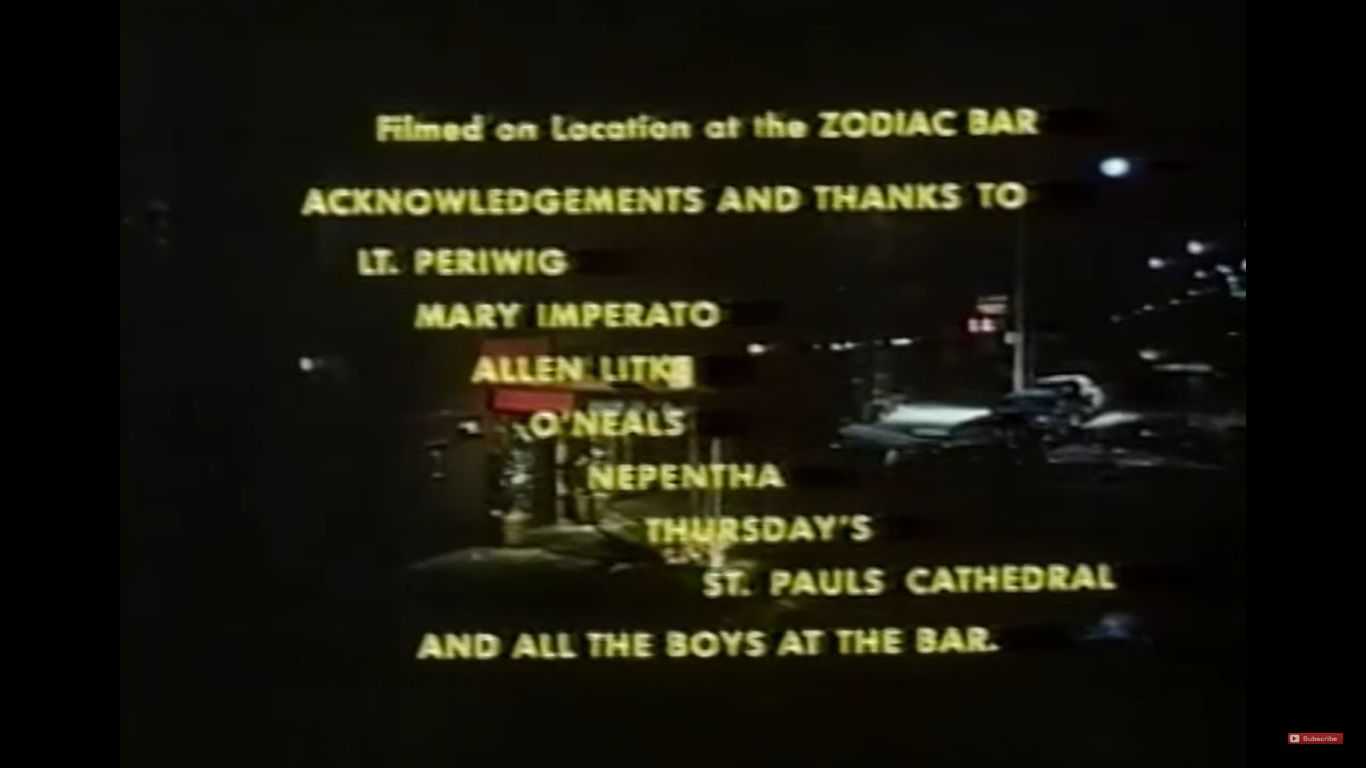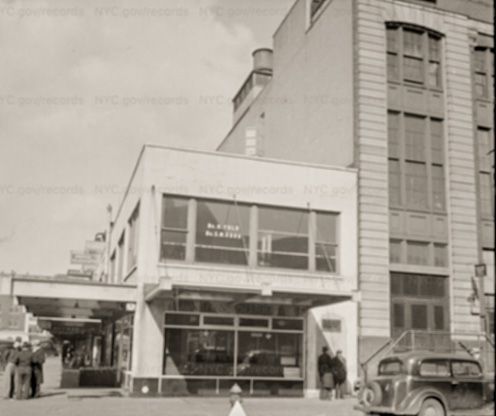overview
From 1968 until 1985, a number of gay leather bars and sex clubs operated in this former market building in the Meatpacking District.
The most legendary was the Mineshaft, a popular sex club that opened in 1976 and became one of the most famous such spaces in the world, but was forced to close in 1985. It became the first gay venue shut down by the City as part of its then-controversial AIDS prevention measures.
History
In the decades after opening in 1927, the market building at 835 Washington Street housed a variety of poultry, fruit, provisions, and meat dealers, and trucking and telegraph firms. The last market-related company lasted here until 1975. Overlapping with that use, a series of gay leather bars began leasing space in 1968 on the first and second floors of the building. The Meatpacking District, in the northwestern corner of Greenwich Village, was then a perfect location for gay nightspots as there were no other nightly activities in the area, other than sex workers on the streets.
The Den / O.K. Corral
The Den, located on the first floor from 1968 to 1976, started out as a members-only leather bar. After a 1970 renovation it was known for dancing, a pool table, cheap drinks, and its free buffet on Sundays. It brought in gay men from across a spectrum of sexual interests – “leather, sweater, and jeans,” as Gay Scene observed. The newspaper GAY, however, mused that “the boots and jackets are often just costume here.” The bar lost its liquor license in January 1972, but managed to reopen. In a 1976 ad, the bar boasted “Do groovy guys hang out mainly at the Den?” Apparently sharing the ground floor was the O.K. Corral, an actual leather bar, from 1969 to 1971.
Hayloft / Zodiac / Dungeon
On the second floor was the short-lived Hayloft, a private membership club for the leather set, from 1968 to 1969. This was replaced by the Zodiac, which featured a sex room, from 1970 to 1971. It was one of the filming locations for the early gay-themed movie Some of My Best Friends Are… (1971), with Fannie Flagg, Candy Darling, Carleton Carpenter, and Rue McClanahan. In 1970, the Zodiac was surveilled by the Knapp Commission investigating police corruption in the 6th Precinct in Greenwich Village, and in July 1971, police raided it as part of a crackdown on nine Mafia-connected bars in the area. The Damron Guide of 1976 listed the Dungeon, perhaps on the second story, with a “wild back room.” That space in 1976 became a disco named the Mineshaft.
The Mineshaft
In the fall of 1976, the Mafia-connected owners hired Wally Wallace to turn the failing disco into a private club for men into the leather subculture. Wallace remained the manager through the club’s existence until 1985. The new Mineshaft, opened on October 6, 1976, expanded into the entire building, including the roof. From the outside, the club could only be identified by the building number “835” and the words “Private Club,” with a long white arrow pointing to the red entrance door.
The Mineshaft was entered through a dark stairway that led to the second floor, where a visitor was greeted by the famous posted Dress Code, and a doorman who checked memberships, enforced the Dress Code, and collected fees. The Dress Code to enter the club was originally strictly leather, but was soon altered to include masculine-presenting wear – however, it prohibited cologne, suits and ties, dress pants, sweaters, rugby shirts, disco wear, and drag. The archetypes of this code influenced the creation of the ironically popular musical group the Village People.
The Mineshaft was a full out sex club. As New York’s Northern Lib Magazine described, it was an “after hours leather bar with NO dancing and sex, sex, sex!” Once inside, most patrons were naked, or nearly so, with footwear required. Behind the check-in was the clothes check, a large bar, and pool tables. The sex “playrooms” were beyond this area, and on the entire ground floor, which was reached by an internal stairway. A total of three bars sold mostly beer, in keeping with the masculine theme. It was open from 2:00 p.m. to 10:00 a.m. on weekends, and on Saturdays between 500 and 600 men would attend.
The writer Brad Gooch remembered the surreal experience of exiting the Mineshaft after a long night out. “Walking out of the Mineshaft at 8 a.m. was eerie,” he told The Advocate in 1996. “Everybody was pale, and there were carcasses hanging all over the meat district on hooks. The line between fantasy and reality blurred for me.”
The editor of the leather magazine Drummer, Jack Fritscher, published an article on the Mineshaft in December 1977 that spurred the club’s fame as an international gay tourist destination. Among the Mineshaft’s famous visitors were actor Rock Hudson, directors Vincente Minnelli and Rainer Werner Fassbinder, philosopher Michel Foucault, singer Freddie Mercury, and artists Keith Haring and Tom of Finland. Photographer Robert Mapplethorpe and a few other friends of Wallace were allowed to photograph the club’s interiors. The erotic artist REX designed posters, ads, and t-shirts for the Mineshaft.
Known for its dark, sexually charged interiors, the club was wanted as a filming location by the director of the highly controversial movie Cruising (1980), starring Al Pacino. Wallace refused the request. In response, people associated with the film crew staged a fake arrest of Wallace and club employees, then snuck in and photographed the interiors. The film was shot elsewhere with the sets based on those photos.
On slow nights, the Mineshaft hosted theater productions, such as Doric Wilson’s 1983 play Street Theater, which was a dramatization of the Stonewall uprising. The Mineshaft was quite generous in holding benefits here, such as one after the tragic 1977 fire at the Everard Baths, and those for the Gay Men’s Health Crisis in the early years of the AIDS epidemic.
AIDS brought about the Mineshaft’s demise. The club had existed in the freewheeling years between gay liberation and the unforeseen rise of the AIDS epidemic. In October 1985, New York State authorities issued emergency regulations allowing local officials to immediately close any “homosexual” places where “high-risk sexual activities” took place. In November, then-mayor Ed Koch was virtually forced to shut down the Mineshaft, which was the first gay venue closed by the City as part of AIDS prevention measures. These policies were controversial at the time in both the gay and medical communities. In addition to the Mineshaft closing, its owners and employees were indicted on tax charges, illegally operating as a not-for-profit and without a liquor license, and conspiracy to impede investigation.
Entry by Jay Shockley, project director (July 2023).
NOTE: Names above in bold indicate LGBT people.
Building Information
- Architect or Builder: Keeler & Fernald
- Year Built: 1926-27
Sources
“After Hours Bars Raided,” Gay Scene, August 1971, 9.
“Bar Listings,” Northern Lib Magazine, April 1, 1977.
Bob Damron, Bob Damron’s Address Book (San Francisco: Bob Damron Enterprises, 1969-1976).
Daniel Villarreal, “Step inside New York’s legendary Mafia-owned leather bar The Mineshaft,” Queerty, November 12, 2022, bit.ly/3XVtUYL.
“D.D.’s New York,” Gay Scene, November 1970, 8.
“The Den” advertisement, Gay Scene, June 1976.
“Happenings,” Gay Scene, July 1970.
Jack Fritscher, Interview with Wally Wallace (1990) in Profiles in Gay Courage, via Jack Fritscher, bit.ly/3PTjg2H.
Jack Fritscher, “The Mineshaft,” Drummer, December 1977.
Jack Fritscher, “The Mineshaft,” Jack Fritscher, March 8, 2002, bit.ly/3OeQ5pB.
Jay Shockley, Gansevoort Market Historic District Designation Report (New York: Landmarks Preservation Commission, 2003).
Joyce Purnick, “City Closes Bar Frequented by Homosexuals, Citing Sexual Activity Linked to AIDS,” The New York Times, November 8, 1985, B3.
Kirk Johnson, “6 Tied to Late-Night Clubs Indicted in Conspiracy Case,” The New York Times, March 1, 1986, 31.
Mark Huisman, “In Profile: Brad Gooch,” The Advocate, June 11, 1996, 58.
Maurice Carroll, “Bar Shut Down for High Risk Sex Was Given a Not-for-Profit Status,” The New York Times, November 9, 1985, 34.
Maurice Carroll, “State Permits Closing of Bathhouses to Cut AIDS,” The New York Times, October 26, 1985, 1.
Mike Jameson, “Taking a Bite of the Big Apple!,” Metropolitan Gazette, July 8-14, 1982.
New York City Gay Scene Guide 1969 (New York: Apollo Book Co., 1968).
Paul L. Montgomery, “Raids Close 9 After-Hours Bars Linked to Mafia,” The New York Times, July 19, 1971, 1.
“Police Crews Dig for Body Under Basement in ‘Village’,” The New York Times, June 11. 1972, 37.
“So you think you know all the good places huh???,” GAY POWER, vol. 1, no. 8, 1969.
“Where Will You Go Tonight?,” GAY, February 7, 1972.
Will Kohler, “LGBT History Month: Remembering The Mineshaft – 835 Washington St. NYC, NY (1976-1985),” Back to Stonewall, October 4, 2012, bit.ly/3NTgF6l.
Do you have more information about this site?
This project is enriched by your participation! Do you have your own images of this site? Or a story to share? Would you like to suggest a different historic site?
